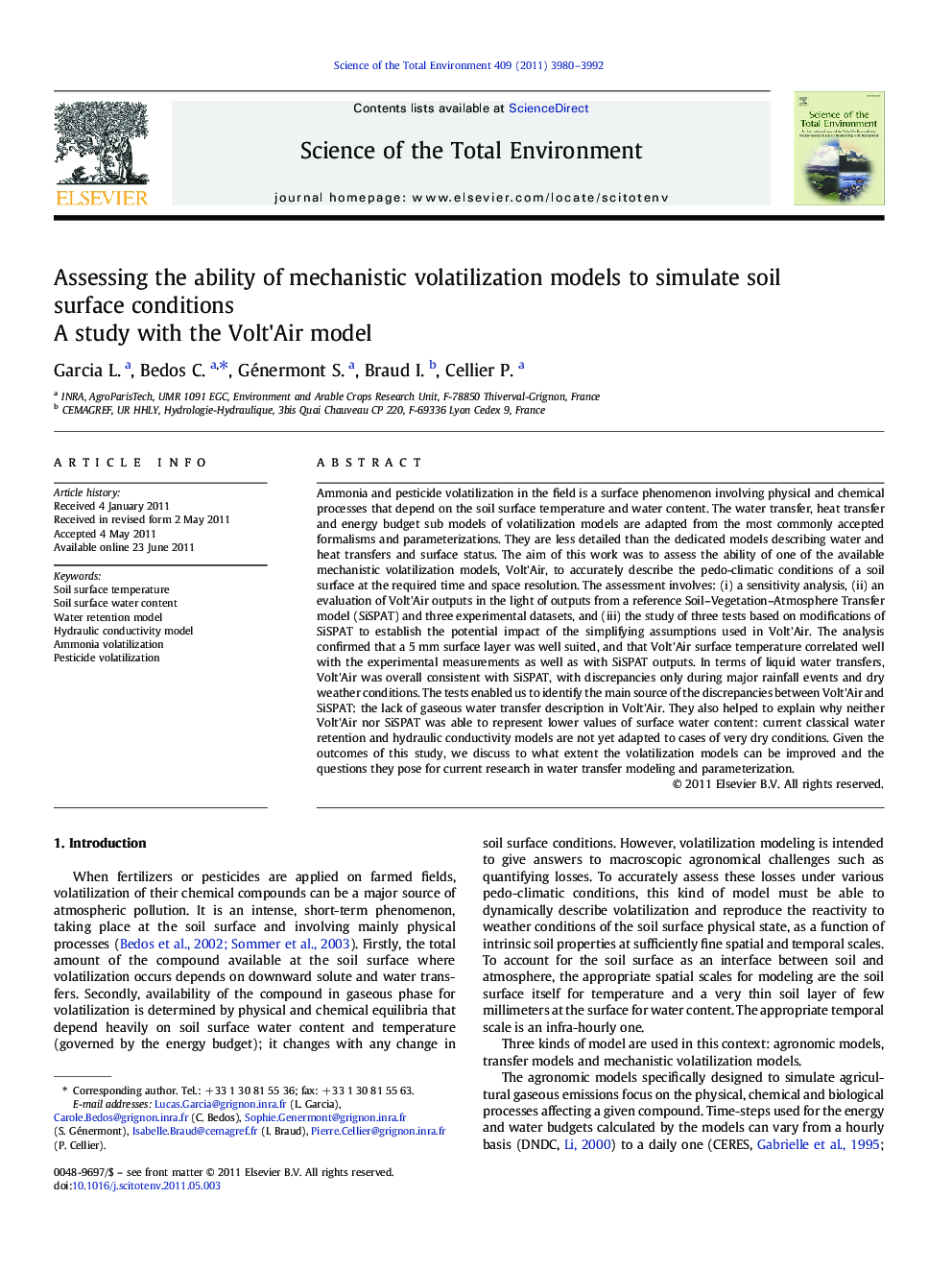| Article ID | Journal | Published Year | Pages | File Type |
|---|---|---|---|---|
| 4430054 | Science of The Total Environment | 2011 | 13 Pages |
Ammonia and pesticide volatilization in the field is a surface phenomenon involving physical and chemical processes that depend on the soil surface temperature and water content. The water transfer, heat transfer and energy budget sub models of volatilization models are adapted from the most commonly accepted formalisms and parameterizations. They are less detailed than the dedicated models describing water and heat transfers and surface status. The aim of this work was to assess the ability of one of the available mechanistic volatilization models, Volt'Air, to accurately describe the pedo-climatic conditions of a soil surface at the required time and space resolution. The assessment involves: (i) a sensitivity analysis, (ii) an evaluation of Volt'Air outputs in the light of outputs from a reference Soil–Vegetation–Atmosphere Transfer model (SiSPAT) and three experimental datasets, and (iii) the study of three tests based on modifications of SiSPAT to establish the potential impact of the simplifying assumptions used in Volt'Air. The analysis confirmed that a 5 mm surface layer was well suited, and that Volt'Air surface temperature correlated well with the experimental measurements as well as with SiSPAT outputs. In terms of liquid water transfers, Volt'Air was overall consistent with SiSPAT, with discrepancies only during major rainfall events and dry weather conditions. The tests enabled us to identify the main source of the discrepancies between Volt'Air and SiSPAT: the lack of gaseous water transfer description in Volt'Air. They also helped to explain why neither Volt'Air nor SiSPAT was able to represent lower values of surface water content: current classical water retention and hydraulic conductivity models are not yet adapted to cases of very dry conditions. Given the outcomes of this study, we discuss to what extent the volatilization models can be improved and the questions they pose for current research in water transfer modeling and parameterization.
Research highlights►Soil surface to be considered in volatilization models by a thin surface layer (5 mm). ►Good description of surface temperature by classical concepts of volatilization models. ►Restitution of dry surface conditions problematic for classical concepts. ►Considering gaseous water transfer in the soil might improve volatilization models. ►Need for better descriptions of water retention and conductivity in dry conditions.
